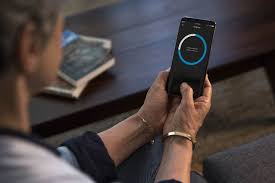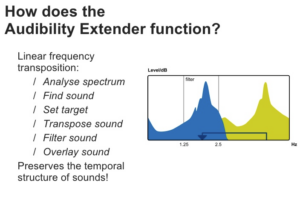About Bluetooth Hearing Aids
About Bluetooth Technology - Background
Bluetooth is a secure short-range wireless communication protocol allowing electronic devices such as mobile phones, computers, hearing aids, and others to transmit or receive data and voice wirelessly over short distances. Bluetooth was developed to replace wires or cables that had in the past connected such devices.
The name “Bluetooth” originated in the 10th century and was the name of the Danish King, Harald Bluetooth. Bluetooth was fabled to have united warring regional factions. Like its namesake, Bluetooth technology brings together a broad range of electronic devices across many different industries utilizing a standard communication protocol. Bluetooth uses less power than Wi-Fi and other wireless communication protocols. It also has a lower power requirement (shorter range) which makes it far less prone to interference with other wireless devices.
Bluetooth
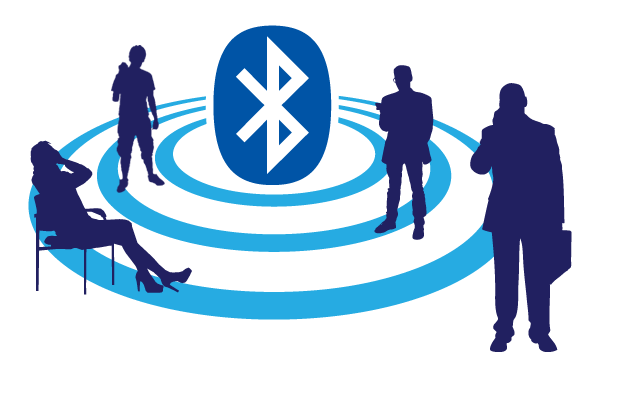
In 2010, Bluetooth 4.0 LE was released. Our main interest in the Bluetooth 4.0 LE update is its lower energy consumption. This updated specification provided the opportunity for battery-powered device usage such as cell phones and Bluetooth hearing aids.
Getting Connected With Bluetooth
Many devices now have Bluetooth radios embedded in them. Some personal computers, laptop computers, and other devices that don’t have built-in radios can be Bluetooth enabled by adding a Bluetooth dongle.
The process of connecting two Bluetooth-enabled devices is called “pairing.” Generally, devices broadcast their signals to each other allowing the user to select the Bluetooth device they want to connect to from a list that appears on their device. This pairing process varies from manufacturer to manufacturer and from device to device.
Is Bluetooth Secure?
Generally, Bluetooth is considered a secure wireless radio waves technology when used between trusted partner devices. Connections are encrypted, which prevents the interception of private communications by other devices. Bluetooth devices frequently shift frequencies while paired, which aids in their security level.
Devices also offer a variety of settings that allow the user to limit Bluetooth connections. This device-level security protocol of “trusting” another Bluetooth device restricts connections to only desired devices.
Bluetooth In Our Lives
It’s hard to believe, but there was once a time when cell phones were only meant to make phone calls. Obviously, this is no longer the case. Technology has progressed to the point that our devices have become much more integrated and interactive in our daily lives.
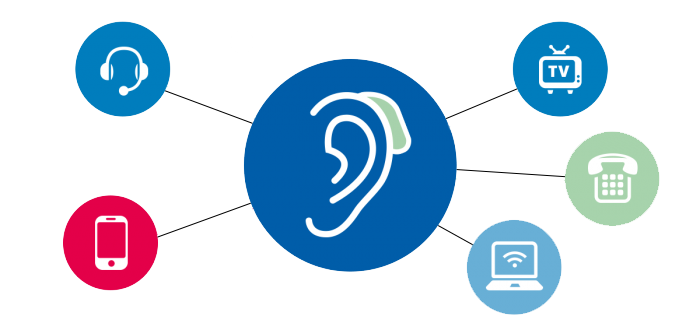
Home appliances, doorbells, cameras, etc. all communicate with each other via wireless technology. Smartphones connect to home appliances, automobiles, computers, speakers and other personal devices and have become the standard interface by which we monitor and control many of the other devices we use.
Minimally we expect our personal devices to be able to communicate with each other. Hearing aids are very personal devices in every aspect of the word. Hearing aids have benefited tremendously from this wave of advanced integrated technology. Hearing aids are no longer just a stand-alone tool to improve the user’s ability to hear other peoples voices better. They can seamlessly help their wearer engage with and connect to a wide range of useful and enjoyable technologies. The introduction of Bluetooth hearing aids has been key to this advancement.
The Bluetooth Hearing Aid Revolution
Bluetooth-enabled hearing aids have revolutionized the industry. Many hearing aid manufacturers have developed “Made for iPhone” and Android hearing aids that easily allow users to stream phone calls, music, and alerts directly to their hearing aids.
Bluetooth and the underlying technology enable modern hearing aids to provide a unified listening experience. Bluetooth connectivity can go beyond just enabling you to hear with your mobile phones. Using your hearing aid’s hearing loss correction as a baseline to enhance all other sound inputs, hearing aids can provide prescribed levels of amplification for better understanding with a multitude of peripheral devices. Users can experience a better hearing experience while watching tv, listening to music, using house and mobile phones, communicating in noisy environments, or with any other Bluetooth device that streams audio.
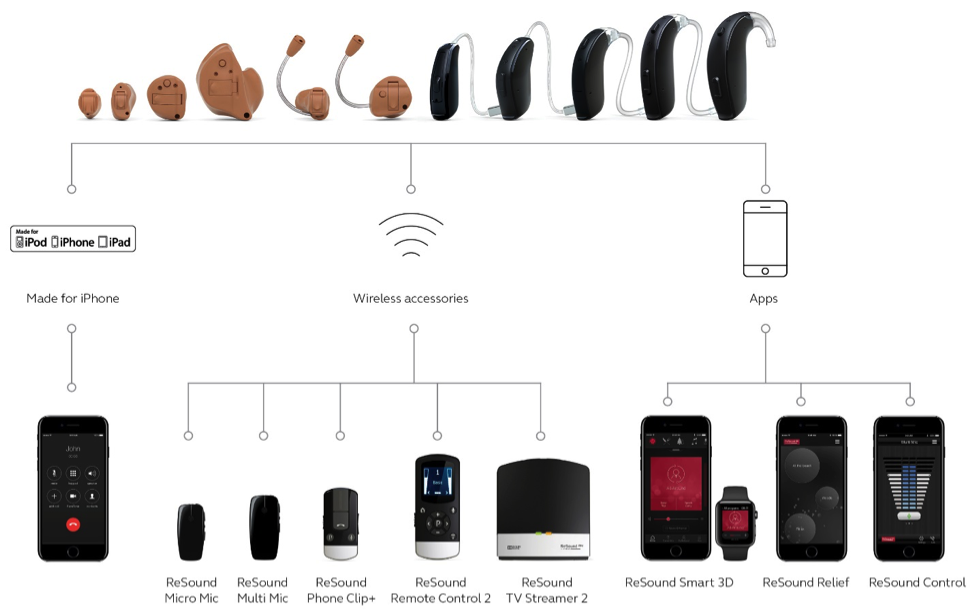
In the past, wearing hearing aids often limited the user’s access to other personal audio devices such as cell phones and music players. For example, many people enjoy listening to a music player while exercising or walking. In the past, hearing aid wearers would have to replace their hearing aids with earbuds to be able to listen to music. With today’s Bluetooth hearing aids, wearers are now able to connect with music devices and cell phones and stream corrected high-sound quality audio and music directly to their hearing aids.
Adjusting Hearing Aids
Specific Bluetooth hearing aid control features vary by manufacturer and model, but can include; volume control, tone and frequency adjustments, directionality, and switching between programs. Both iPhones and Android phones require an App to be downloaded to enable the phone to connect to and act as a remote control for Bluetooth-paired hearing aids.
Downloading the appropriate hearing aid app to cell phones generally allows the user to control many features of the paired hearing aids. This feature is particularly useful since modern hearing aids are getting so small that it is hard to find room to accommodate external controls.
Personalized listening experience
The benefit of utilizing Bluetooth hearing aids to provide a clear crisp corrected audio signal to your ears is wondrous. An audio signal from your music device or cell phone would normally be heard by your ears uncorrected for your particular hearing loss. Sending the signal to your hearing aids for correction prior to you hearing it can be tremendously beneficial. The received signal can be amplified and shaped to correct the wearer’s hearing loss and personalized for the wearer’s needs and desires. The volume of the audio signal can be easily adjusted on the mobile phone for your specific environment. For music listening, your hearing aids are now a personalized stereo sound system with built-in equalizers.
Multiple devices can be paired to a single streamer, so you can easily switch between them. For example, you can connect your mobile phone to your automobile and hearing aids. While walking to your car you can be listening to music or a telephone call and when you get into your car, the phone call or music can be switched to your in-car Bluetooth audio system. Or while listening to music from your smartphone through your hearing aids and you receive a call, the music will automatically be paused so that you can handle the call. When the call is finished the music will resume automatically.
In-Situ Audiometry
Some Bluetooth hearing aids include In-situ hearing testing. In-situ hearing testing or audiometry is a hearing aid feature that allows for the measuring of the wearer’s pure tone hearing threshold levels through the hearing aids themselves using a built-in sound generator. This In-situ feature can be used in hearing aid fittings instead of traditional hearing testing for the purpose of establishing hearing aid output characteristics.
In-situ hearing testing is particularly appreciated in places where no standard hearing testing equipment is available. In-situ hearing testing does not replace the need for traditional audiometry for medical purposes.

Not Bluetooth Hearing Aids
If your hearing aid doesn’t have a feature for Bluetooth connectivity built in, don’t worry. Hearing aid manufacturers have designed a unique solution for accessing the benefits of Bluetooth. Those hearing aids can use an Induction Loop or Streamer to connect a peripheral wireless device.
Hearing aids can be paired with a streamer, and then the streamer can be paired with other external devices such as a mobile phone. When set up correctly, the streamer will pick up the Bluetooth signal from your phone, convert the Bluetooth signal to FM or electromagnetic field (depending on the manufacturer’s design) and resend it to your hearing aid wirelessly.
A streamer can be worn around your neck or placed in your pocket allowing you to enjoy the benefits of hands-free operation. Whether you use a Bluetooth hearing aid or a streamer device to stream audio to your hearing aids, the ability to enjoy your audio information or music are awesome benefits that heretofore have been unavailable.
A Standard Protocol
In conclusion, Bluetooth has become the electronics industry’s standard communication protocol. It’s not specific to one particular communication genre, manufacturer, or device. There is now uniformity for all personal communication devices. The Bluetooth system has been time-tested and refined. Bluetooth has deservedly evolved into a marvel of security, reliability, and usability for all communication platforms.
Bluetooth hearing aid technology has greatly elevated the hearing aid wearers’ experience and enables hearing aids to double as highly-personalized, custom audio devices. It’s an example of using today’s wireless hearing aid technology in a smart way that truly provides convenience for hearing aid wearers.
For more information on current Bluetooth hearing aids, Please call 1-80-416-2434, Monday thru Friday 9:00 am to 9:00 pm Eastern time.

